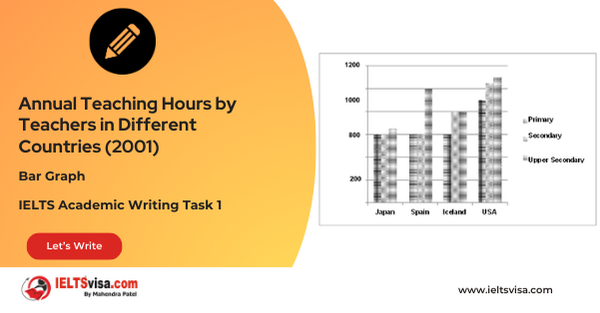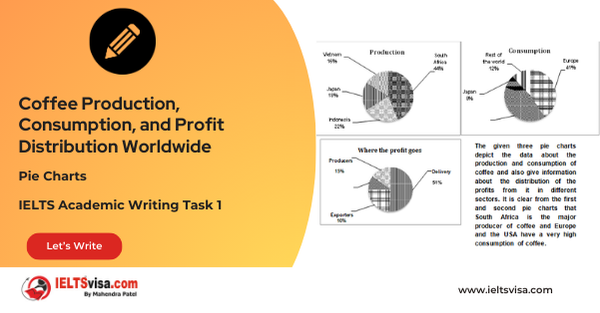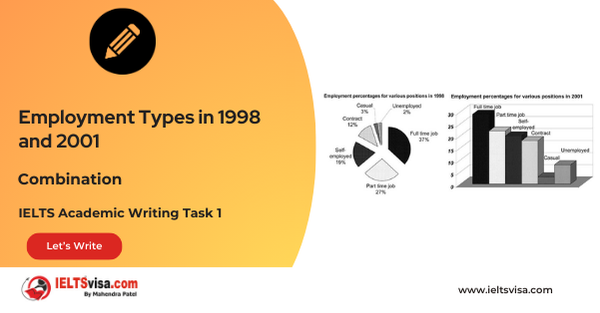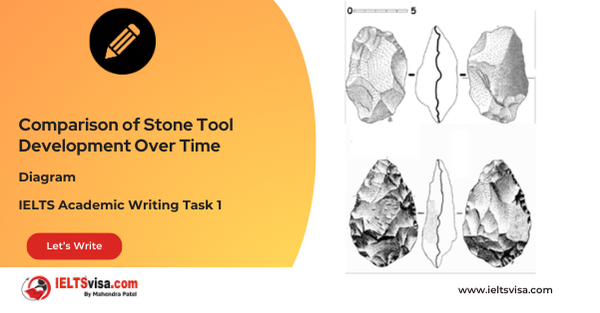The percentage of share of total world production of wheat by Asia, Europe and other part of the world from the years 1840 to 2000
IELTS Academic Writing Task 1 - Bar Graph

IELTS Writing Task 1 Question
The diagram below shows the percentage of share of total world production of wheat by Asia, Europe and other part of the world from the years 1840 to 2000. Summarise the information by selecting and reporting the main features and make comparisons where relevant.
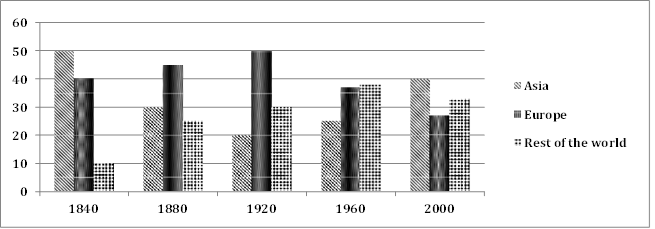
Common Questions for the Bar Graph
1. Graph Type: Bar Chart
2. Title: Percentage Share of Total World Wheat Production (1840–2000)
3. What are the units of measurement?: Percentage of total world wheat production
4. Who: Asia, Europe, and the rest of the world
5. When: 1840 to 2000
6. Where: Asia, Europe, and other parts of the world
7. Topic: Changes in the regional share of global wheat production
Comparison Showing and Trends
Comparison 1: Initial Shares in 1840
- Details:
- Asia led with 50% of global wheat production.
2. Europe followed at 40%, while the rest of the world contributed only 10%.
Comparison 2 : Major Shifts Over Time
- Details:
- Asia’s share dropped sharply to 20% by 1920 but recovered to 40% by 2000.
2.Europe’s share increased to 50% by 1920 but declined steadily to 27% by 2000.
3. The rest of the world saw a steady rise, peaking at 38% in 1960 before slightly declining to 33% by 2000.
Sample Answer
The bar chart illustrates the percentage share of global wheat production by Asia, Europe, and the rest of the world from 1840 to 2000.
Overall, Asia reclaimed its dominance in global wheat production by 2000, while Europe’s contribution diminished. The rest of the world showed steady growth throughout the period, reducing the regional production gap.
In 1840, Asia accounted for the highest share of wheat production at 50%, followed by Europe with 40%, while the rest contributed just 10%. By 1920, Asia’s production dropped sharply to an all-time low of 20%, whereas Europe’s share peaked at 50%. The rest of the world experienced a gradual increase, reaching 25% by this time.
From 1920 onward, Asia’s share rebounded steadily, rising to 40% by 2000. In contrast, Europe’s production declined significantly after its peak, bottoming at around 27% by 2000. The rest of the world continued to grow moderately, peaking at 38% in 1960 before slightly declining to 33% by the end of the period.
Top 27 Vocabularies
| Vocabulary | Type | Meaning | Synonyms | Examples |
| Share | Noun | A portion or percentage of a whole | Portion, Part | Asia held the largest share of wheat production in 1840. |
| Fluctuation | Noun | Irregular changes in level or amount | Variation, Instability | Fluctuations were evident in wheat production over time. |
| Escalate | Verb | To increase or rise | Climb, Increase | Wheat production from the rest of the world escalated until 1960. |
| Bottom out | Verb | To reach the lowest point | Decline, Drop | Europe’s wheat production bottomed out by 2000. |
| Pronounced | Adjective | Noticeable or significant | Marked, Distinct | Differences in production were less pronounced by 2000. |
| Illustrates | Verb | To show or explain clearly | Demonstrates, Depicts | “The bar chart illustrates the percentage share of global wheat production.” |
| Dominance | Noun | The state of being most important or influential | Supremacy, Authority | “Asia reclaimed its dominance in global wheat production by 2000.” |
| Diminished | Verb | To decrease or become smaller | Reduced, Decreased | “Europe’s contribution diminished over the years.” |
| Gradual | Adjective | Happening slowly over a period of time | Steady, Progressive | “The rest of the world showed gradual growth in production.” |
| Gap | Noun | A space or difference between two things | Discrepancy, Difference | “The regional production gap narrowed over time.” |
| Rebounded | Verb | To recover or rise again after a decline | Recovered, Resurged | “Asia’s wheat production rebounded after its low in 1920.” |
| Peaked | Verb | To reach the highest point or level | Climbed, Reached | “Europe’s share of production peaked in 1920.” |
| Steady | Adjective | Constant, not changing over time | Consistent, Unwavering | “Asia’s production showed steady growth in the 20th century.” |
| Contribution | Noun | The act of giving or adding to something | Input, Share | “Europe’s contribution to wheat production declined after 1920.” |
| All-time low | Noun Phrase | The lowest point ever reached | Record low, Minimum | “Asia’s share of wheat production dropped to an all-time low in 1920.” |
| Slightly | Adverb | To a small degree | Marginally, Barely | “The rest of the world’s share slightly declined by the end of the period.” |
| Peak | Noun | The highest point or maximum | Summit, Zenith | “The peak of global wheat production in the rest of the world occurred in 1960.” |
| Reclaimed | Verb | To take back or regain something | Recovered, Resumed | “Asia reclaimed its dominant share of wheat production by 2000.” |
| Escalation | Noun | An increase in intensity or magnitude | Growth, Rise | “The escalation of wheat production in the rest of the world continued through the 20th century.” |
| Moderate | Adjective | Average or not extreme | Balanced, Average | “The rest of the world continued to grow moderately after 1960.” |
| Surged | Verb | To rise or increase suddenly and strongly | Soared, Rocketed | “Asia’s production surged steadily after its drop in 1920.” |
| Fluctuating | Adjective | Varying irregularly, especially with rises and falls | Shifting, Unstable | “The fluctuations in wheat production over time were significant.” |
| Peak | Noun | The top or highest level reached in a particular area | Apex, Summit | “In 1920, Europe reached the peak of its wheat production.” |
| Decline | Noun/Verb | A decrease or reduction in quality or quantity | Drop, Decrease | “There was a steady decline in Europe’s wheat production after 1920.” |
| Proportion | Noun | The relationship in size or amount between different things | Ratio, Fraction | “Asia’s proportion of global wheat production increased after 1920.” |
| Declining | Verb/Adjective | Becoming smaller or less important over time | Diminishing, Decreasing | “The percentage share of wheat production from Europe was declining over the years.” |
| Sustained | Verb | Maintained or kept going at a steady rate | Continued, Maintained | “Asia’s wheat production sustained its growth through the 20th century.” |

Our Books
Master IELTS Speaking Part 1
IELTS Writing Task 1 Book
IELTS Writing Task 2 Book
Writing Task 1 Question Types
Practice IELTS Other Modules
IELTS Listening
The IELTS Listening test assesses how well you can understand spoken English in various contexts. It lasts about 30 minutes and is divided into four sections with a total of 40 questions. The listening tasks become increasingly difficult as the test progresses.
IELTS Academic Reading
The IELTS Academic Reading section assesses your ability to understand and interpret a variety of texts in academic settings. It is designed to evaluate a range of reading skills, including skimming for gist, reading for main ideas, reading for detail, understanding inferences, and recognizing a writer's opinions and arguments.
IELTS Speaking
The IELTS Speaking test assesses your ability to communicate in English on everyday topics. It lasts 11-14 minutes and consists of three parts: introduction, cue card, and a discussion based on the cue card topic.
IELTS General Reading
IELTS General Reading tests your ability to understand and interpret various types of texts. Here are some key areas and types of content you can expect to encounter in the reading section, along with tips for effective preparation.
IELTS Academic Writing Task 1
In IELTS Academic Writing Task 1, you are presented with a visual representation of information, such as graphs, charts, tables, or diagrams, and you are required to summarize, compare, or explain the data in your own words.
IELTS General Writing Task 1
In IELTS General Writing Task 1, you are required to write a letter based on a given situation. The letter can be formal, semi-formal, or informal, depending on the prompt. Here’s a breakdown of the key components to include in your letter
IELTS Academic Writing Task 2
In IELTS Academic Writing Task 2, you are required to write an essay in response to a question or topic. Here’s a guide to help you understand the essential elements of this task
IELTS Exam Tips
To succeed in the IELTS exam, practice regularly, familiarize yourself with the test format, improve your vocabulary, develop time management skills, and take mock tests to build confidence.
Grammer for IELTS
Grammar is the foundation of effective communication in English. Understanding tense usage, subject-verb agreement, and sentence structure enhances clarity and coherence in writing and speaking.
Vocabulary for IELTS
Vocabulary plays a crucial role in the IELTS (International English Language Testing System) exam, especially in the Speaking and Writing sections. Here’s an overview of why vocabulary is important and how it impacts your performance
RECENT IELTS SAMPLES QUESTIONS AND ANSWERS
Task 1 – Column graph – Percentage of Young People Enrolled in Universities in 2000 and 2007.
20:00 Start Pause Stop [df_adh_heading title_infix="IELTS Writing Task 1 Question" use_divider="on"...
Task 1 – Bar Graph – Annual Teaching Hours by Teachers in Different Countries (2001)
20:00 Start Pause Stop [df_adh_heading title_infix="IELTS Writing Task 1 Question" use_divider="on"...
Task 1 – Pie Charts – Coffee Production, Consumption, and Profit Distribution Worldwide
20:00 Start Pause Stop [df_adh_heading title_infix="IELTS Writing Task 1 Question" use_divider="on"...
Task 1 – Column graph – Types of Transport Used by Tourists Visiting New Zealand from Five Countries in 2004.
20:00 Start Pause Stop [df_adh_heading title_infix="IELTS Writing Task 1 Question" use_divider="on"...
Task 1 – Bar and Pie Chart Combination – Employment Types in 1998 and 2001
20:00 Start Pause Stop [df_adh_heading title_infix="IELTS Writing Task 1 Question" use_divider="on"...
Task 1 – Diagram – Comparison of Stone Tool Development Over Time
20:00 Start Pause Stop [df_adh_heading title_infix="IELTS Writing Task 1 Question" use_divider="on"...


